| |
 |
|
Recent advances in research and development in |
|
fermented rice roughage and feed grain rice |
|
|
Norio Yoshida |
| (Professor, Field Science Center, Faculty of Agriculture, Yamagata Univercity) |
|
|
|
|
|
| |
Prefac |
|
|
The steep rise in prices of imported feed grains and hay products is inflicting a heavy impact on livestock farmers, urgently calling for the increase of domestic production of animal feed. Since this situation persists, the question how to utilize paddy fields more efficiently, including the growing of rice as a feed crop, presents an important challenge. In this context, I would like to review the processes of past studies conducted on forage rice and feed grain rice, in order to have a technical perspective and identify issues in the technology dissemination in the future.
|
|
|
(1) |
Evolution of policies on paddy fields and utilization of rice as a forage crop
As a result of the surplus of rice production as compared with the level of consumption, the amount of stock kept on increasing, and the measure to deal with the problem was initiated in 1971 in the form of "Policy for rice crop conversion". Since then, the successive measures evolved by assuming various designations including: "Policy for comprehensive utilization of paddy fields"; "Policy for reorganization of paddy field utilization"; "Policy for establishment of paddy field agriculture"; "Policy for activation of paddy field farming" ; "New policy for promotion of production adjustment "; "Policy for urgent production adjustment"; and ongoing "Policy for development of production centers".
Regarding the utilization of rice crop as animal feed, each of those policies has defined the eligibility requirements for receiving promotional subsidies and established three classes of rice crop as animal feed, depending on the growing stage at harvest, namely, soiling crop harvested around the heading stage; "whole-crop silage" harvested around the dough to yellow ripe stage; and "feed grain rice" harvested at complete maturity.
Both concept and research of rice as feed crop has evolved in parallel with the development of conversion of food rice production. Initially, in the use of rice as forage crop, it was harvested predominantly as a soiling crop, and even though the cultivated area exceeded 20,000 ha at a certain time, it was estimated that the actual amount fed to animals was insignificant, because of the difficulty in harvesting operation and the low quality of silage and other reasons. As another method of utilization, "whole crop silage" preparation, in which grains as well as straws are harvested simultaneously, has been adopted as key element, starting since the secondary phase (1984) of the policy for reorganization of paddy field utilization. The technique is similar to the one that is currently being promoted, namely, "fermented rice roughage" in which the quality of silage can now be assured to attain a certain level by harvesting the whole crop exclusively at dough to yellow ripe stage when the moisture content decreases (Fig. 2).
Due to the cool summer damage in 1993, the rice utilization by both soiling crop and whole-crop silage decreased drastically in succeeding years. However, the rice utilization by whole-crop silage, namely, "fermented rice roughage" has been increasing gradually since the implementation of "the Policy of establishment of paddy field farming" and "Subsidies for verification of feeding", both started in 2000. The factors contributing to the increase of this utilization mode could be ascribed to the subsidies for both crop cultivation and animal husbandry as well as to the technology generation in such areas as the development of new varieties, that of dedicated harvesting equipment, that of methods of silage preparation, and that of techniques for feeding dairy and beef cattle. Cultivated area has increased steadily since 2000, reaching about 6,200 ha in 2007. The practice of feeding dairy and beef cattle with whole-crop silage has been established at last by the efforts of past 20 years since the beginning of the secondary phase of Policy for reorganization of paddy field utilization.
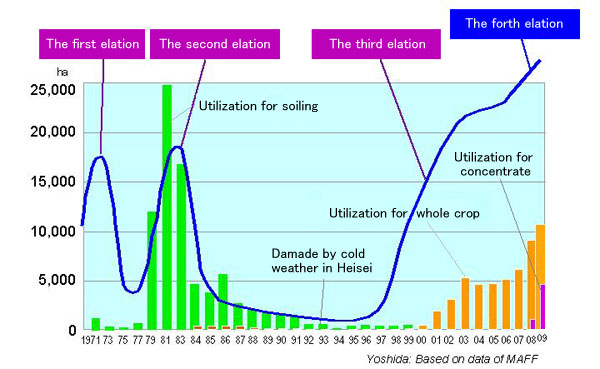
Fig. 1 Different phases of policy on paddy field farming and evolution of utilization of irrigated rice as animal feed
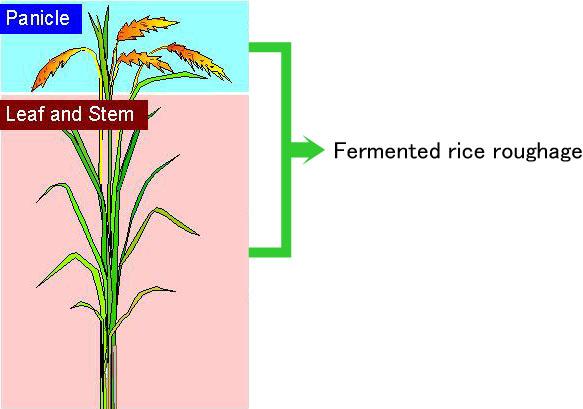
Fig. 2 Plant parts used for preparing fermented rice roughage
|
| |
|
|
|
|
(2) |
Technology development for forage rice |
| |
|
R & D programs that have brought about the technology establishment as described below include: the comprehensive research project commissioned by the government, "Brand Nippon", comprising as the third element the animal husbandry component (2000 - 2005); the comprehensive research project for establishing regional agriculture covering 4 regions (2003 - 2005); the research projects for establishing regional backbone, etc. These programs have generated a systematized and practicable technology, summarized in "Technical manual for production and feeding of the fermented rice roughage" (published in 2000, 2001, and 2005). Technologies associated with rice as a feed crop are developing steadily.
I have been focusing my attention to this area since almost 30 years ago, and would like to present recent advances in research because they have been remarkable since 1999. Firstly, it is needed to mention the development of varieties exclusively utilized as animal fodder. The efforts of the National Agriculture and Food Research Organization have developed the following 10 varieties or strains: "Hoshi-aoba"; "Kusa-honami"; "Kusa-no-hoshi"; "Kusa-yutaka"; "Yume-aoba"; "Nishi-aoba"; "Beko-aoba"; "Tachi-aoba"; "Leaf Star"; and "Beko-gonomi" (Fig. 3). These new varieties are characterized by a high TDN (total digestible nutrient) yield, i.e., higher by 5 - 20 % than that of food rice varieties, higher resistance to lodging, and higher disease resistance, and even varieties capable of realizing dry matter yields exceeding 20 tons/ha have been developed. Secondly, in the area of crop cultivation, efforts have been made to develop technologies for reducing production cost, and it has also been demonstrated that the utilization of compost and liquid manure enables farmers to reduce the consumption of chemical fertilizers and that the repeated application of the organic materials year after year leads to a higher crop yield. This aspect of technology development concerns the area where the animal production sector is able to collaborate with the crop production sector, and hence the utilization of compost in paddy fields is expanding, touched off by the growing of forage rice.The third component of research on forage rice has been concerned with the most important issue of development of mechanization technology for facilitating the task of harvesting crop in excessively wet paddy fields. It is needless to say that the conventional machinery for harvesting forage crops already owned by livestock farmers can be utilized for the purpose in the case where the paddy field is well drained and dries up by the harvest time. However, in poorly drained paddy fields it is needed to have machines capable of locomotion in wet and soft ground, such as those equipped with tracks instead of wheels as well as with the function of carrying out both harvesting and transportation of the crop simultaneously. Thus, the forage rice harvester and the self-propelled bale-wrapper which combine different types of crop gathering unit and roll-baling unit, have been developed and about 100 sets of them are currently in operation (Fig. 4, 5).Two types of forage rice harvester are available, both equipped with the devices to spray additives for silage at the time of harvest. The innovative development of these harvesting machines has enabled farmers to facilitate farming operations in paddy fields and to improve the silage quality to a large extent.
As you can recognize, a plant of forage rice has a structure of hollow stem. It has been also demonstrated that it is difficult to obtain a high quality of fermentation, because the number of lactic acid bacteria (lactobacilli) present there is small and the content of sugar needed for fermentation is low. The fourth area of research has focused efforts on the method for achieving long term stability of forage rice silage. The silage prepared by using plants at a growth stage prior to dough stage is unstable in quality, and it has been considered necessary to compress the material to elevate bulk density above 120 kg DM/m3 or to reduce the activity of bad microorganisms by preliminary treatment of dehydration. In order to overcome these drawbacks, a new race of lactic acid bacterium adapted to forage rice silage, "Chikuso No. 1", has been developed by National Agriculture and Food Research Organization and others. This bacterium is characterized by the capacity for achieving an extremely high quality of fermentation even with materials of high moisture content, and thus making it possible to preserve the silage for long duration. The bacterium race has been commercially available since 2003, distributed by Snow Brand Seed Co., Ltd. (Fig. 6, 7), and the number of farmers utilizing it is increasing year by year. It is highly appreciated particularly by those livestock farmers who feed their cattle with silage for long periods.
The fifth area of research concerns the method for feeding dairy and beef cattle. In actual cases of dairy farming, the silage prepared from forage rice (fermented rice roughage) had been utilized mostly for feeding heifers and dry (non-lactating) cows and its utilization for feeding lactating cows had been limited. Recent studies on feeding of lactating cows have revealed that the feeding regime of forage rice silage has to take into account the fact that, in terms of nutritive value, the content of NDF (neutral detergent fiber) is relatively low because it contains grains, and is similar to maize silage with a high content of NFC (non-fibrous carbohydrate) . Furthermore, since grains were excreted without undergoing digestion, studies were made to increase the dry matter intake.Studies demonstrated that, in the case of fermented TMR (total mixed ration) for feeding high lactating cows, it was possible to increase the dry matter intake and milk production by cutting straws into fine pieces with length of 1.5 - 3.0 cm.An on-farm verification study on fermented TMR, conducted by Niide et al. in Hiroshima Prefecture, has demonstrated that the concerns about the reduced lactation can be eliminated completely by feeding cattle with TMR processed by incorporating, at a rate of 20 %, fermented forage rice with straws chopped to a length of about 3 cm and by adjusting the contents of NDF and NFC, and that the ration has nutritive value capable of maintaining the lactation level of 30 - 40 kg of milk/day for about 200 days after calving. The workers have demonstrated also that, when inexpensive fermented forage rice and eco-feed are used in combination, the amount of feed grains consumed per head per day can be reduced by 20 - 30 %.
Furthermore, regarding the feeding of beef cattle, studies confirmed the effectiveness of forage rice as feed for beef cattle reared for breeding. As means for reducing the content of vitamin A in the forage for fattening cattle, which has been an issue calling for solution, it has been verified that a preliminary treatment of field drying for 2 - 3 days can reduce the level of vitamin A content to an equivalent level found in rice straw hay. Another characteristic of fermented forage rice concerns a high level of vitamin E (α-tocopherol) (Fig. 8) in it and it has been demonstrated that the silage is effective for preventing discoloration and oxidation of fat during the preservation of meat under refrigeration, and hence the utilization of the feed for fattening cattle is expanding. Fermented rice roughage used to be reputed to be unpalatable for cattle: "Cows don’t eat it", people said. However, with the improved palatability and the progress in feeding studies, the utilization of it in feeding dairy and beef cattle is expanding steadily.
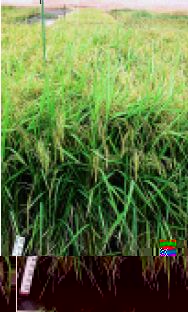
Tachi-aoba (National Agricultural Research Center for Kyushu Okinawa Region) |
|
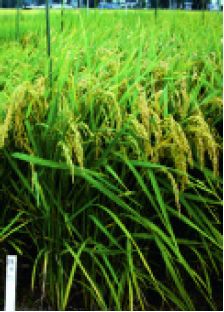
Bego-gonomi (National Agricultural Research Center for Tohoku Region) |
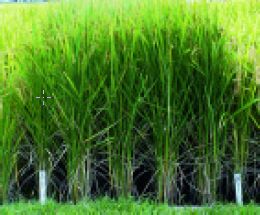
Leaf Star (National Institute of Crop Science)
Fig. 3 New rice varieties for fermented rice roughage (National Agriculture and Food Research Organization )
|
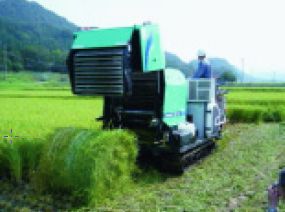
Fig. 4 Forage rice harvester (combine type) |
|

Fig. 5 Forage rice harvester (flail type) |
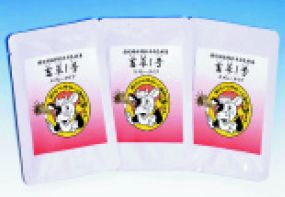
Fig. 6 Lactobacillus for forage rice silage "Chiku-so No. 1" |
|
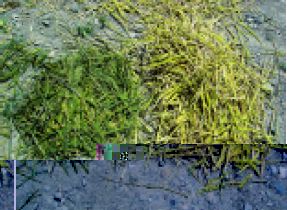
Fig. 7 Silage of good quality with additive of "Chiku-so No. 1" (right) |
|
| |
|
|
|
|
(3) |
Challenges in the promotion of utilization of forage rice |
| |
|
The present state of production and utilization of forage rice is described as follows, with the case identified in Kanto District as a representative example:
Actual dry matter yield = 875 kg/10 a;
Selling price of product = 26 yens/10 a;
Production cost including labor and depreciation of machinery (dedicated harvesting machine) = 90,000 yens and over.
Due to the constraints imposed by such factors as requirement for collective rotation scheme, most of forage rice is grown as a single year crop on a single plot, the situation that does not allow farmers to adopt the cultural management practices best suited for forage rice, and consequently leads to low yields. Furthermore, it has to be pointed out that the selling price in trading is currently below the level of that of rice straw hay. It is also essential to improve technologies for raising yield, and the continuous cropping in the same plot is important, because the yield level can be raised by the utilization of farmyard manure above the level of the cultivation otherwise without fertilizing materials, which is the advantage accruing from the collaboration between livestock production and crop cultivation. In Maebashi City in Gunma Prefecture where farmers have been growing forage rice since nearly 10 years ago, we are able to find cases where farmers have achieved the yield level of 17 t of dry matter/ha owing to the effective application of liquid manure, suggesting that the sustainable production is practicable.
Regarding both crops of forage rice and feed grain rice, while there remain numerous problems needing solution, a thorough review of essential factors involved in production and utilization is required, drawing on experiences accumulated so far and taking account of opinions of users (livestock farmers), in order to identify adequate technologies and procedures in such areas as variety selection, cultural methods (water management, manure utilization), operational planning of harvesting and shipping, silage preparation, and feeding regime. Harvested and processed silage has to be treated as a "commercial product", unless it is produced and consumed in-house. From the viewpoint of guaranteeing feed quality, the crop has to be harvested at the optimum growing stage and processed without causing fungi formation and contamination with foreign matter to ensure the supply of forage of good quality, which would eventually contribute to the development of sustainable market. In order to accommodate the forage quality to the difference in feeding requirements between dairy cattle and beef cattle, it is needed to develop specific technologies adapted to different destinations of the product.
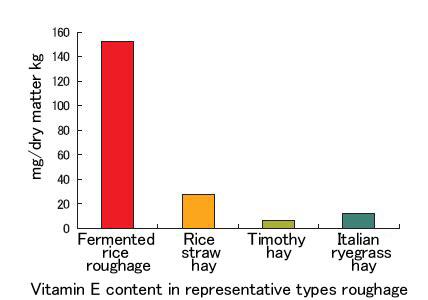
Fig. 8 Fermented rice roughage of high vitamin E content
|
|
|
(4) |
Toward the creation of regional complexes |
| |
|
In order to expand further the production of home-grown feed (including utilization of forage rice), in face of aging of actors in livestock and crop production and under the circumstances calling for enhanced utilization of paddy fields, it is generally hoped for to establish contractor systems and TMR centers through the collaborative association between livestock farmers and crop cultivation farmers within a local area. Current cultivated areas of forage rice that is utilized in a systematic manner are distributed only in Kyushu and Tohoku Districts. In other regions, the crop is utilized only through a restricted channel connecting one rice farmer with another livestock farmer. The function of TMR centers could be expected to serve as an effective system for promoting consumption of harvested forage rice and thus raising the self-sufficiency rate of animal feed.
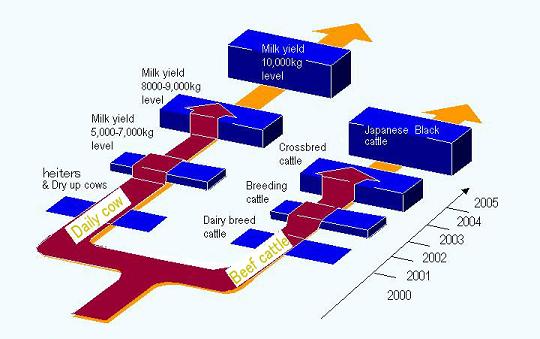
Fig. 9 Development in feeding of fermented rice roughage and associated issues
|
| |
|
|
| |
|
Conclusion |
|
|
|
The development of production and utilization of forage rice (fermented rice roughage, feed grain rice, rice straw hay) has become a touchstone of the strategy to cope with the rising prices of imported cereals and roughage products. It is imaginable that the production of forage rice will increase remarkably in 2008. The commitment would have to be fulfilled in principle through collaborative association between rice farmers and livestock farmers which should be a kind of win-win relationship between them and in consequence able to provide the nation with safe and reliable animal products. It has become an important agenda for each locality to formulate a "vision of effective utilization of paddy fields" in which the field sectors are classified into two groups, i.e., one as priority land for growing staple food rice and the other for growing forage or feed grain rice.
Author's profile
Born in Kyoto Prefecture, graduated from Niigata University, Ph. D. (Science). Working first at Agriculture Research Center of Saitama Prefecture, then National Institute of Livestock and Grassland Science. Committed since 1978 in research and extension of technologies for production and utilization of forage rice, improvement of feed value of rice straw hay
|
|
|
|
|
|
|
|